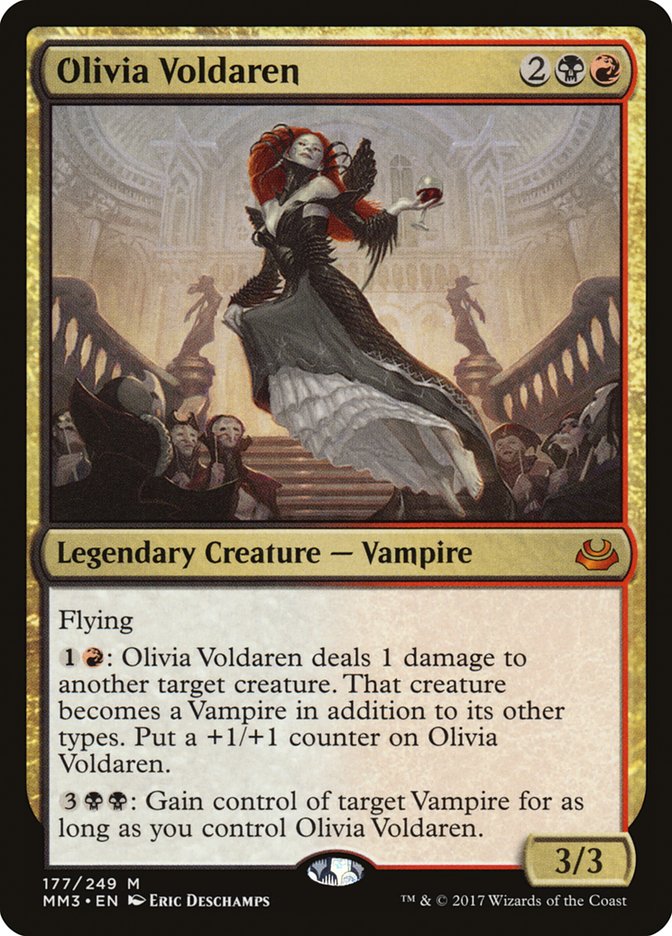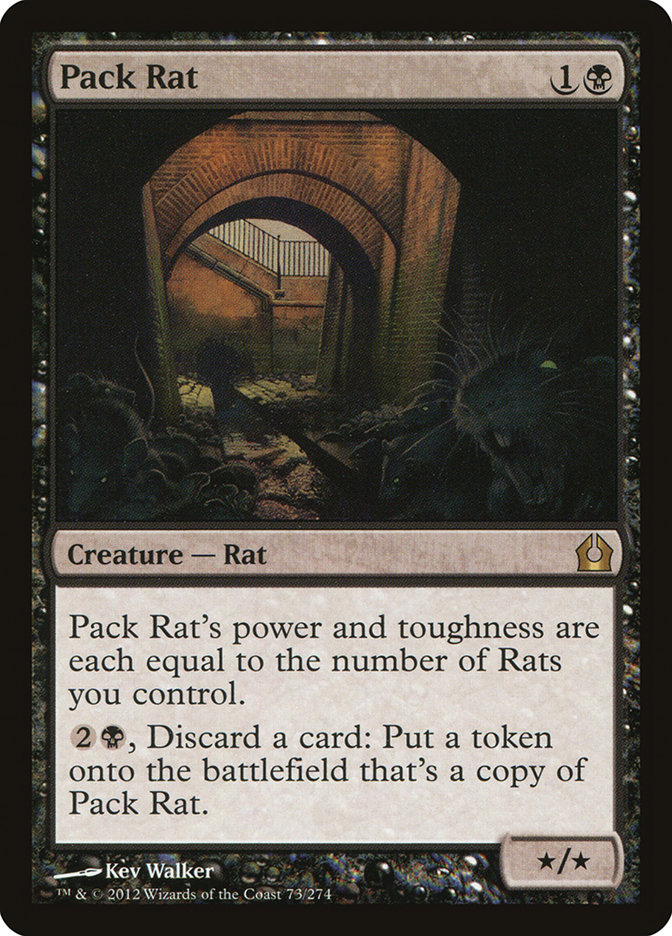Generally I shy away from meta-articles or even strategy ones. I brew, and that’s what most people come here to read. I’m not a great player and I know it, so I leave the strategy stuff to Sam Black, Ari Lax, Patrick Chapin, and the rest of the impressive pro contingent here at StarCityGames.com (cheap pop). But it’s precisely because I know brewing that I feel qualified to talk to you this week about an important element when preparing for a major event: staying open.
Normally associated with drafting, “staying open” means something entirely different when talking about Constructed. Instead of picking artifacts early or keeping an eye on underdrafted colors, we are instead talking about being aware of more cards and more lines of play. Staying open in this case means not getting tunnel vision on a subset of cards or a small selection of lines, and being ready and willing to go deep when required.
That Sideboard Tech Is a Gatherer Search Away
One common trait I have noticed among people who enjoy brewing is that they have a near-encyclopedic knowledge of cards from basically every set ever printed, and not just cards that saw heavy tournament play but any card that ever came close to being playable in any format. Aside from being a neat party trick and a great way to impress potential partners, this is actually incredibly useful when trying to crack a metagame.
For example, take Olivia Voldaren. When Innistrad was released, Olivia was considered a Limited bomb that was too slow for Standard. Then things like this started to happen:
Creatures (10)
Planeswalkers (3)
Lands (26)
Spells (21)

Patrick Chapin was I believe the first person to notice the power of Olivia in Standard, and he is of course one of the best brewers to ever have a notebook. In addition to going 5-1 in the Standard rounds of Worlds just a few months after Olivia Voldaren became legal, he would go on to make the finals of GP Orlando soon thereafter with a similar list. As a brewer, Chapin saw a card he thought was too good to not be seeing play and had success with it.
Fast forward about a year and Reid Duke would join in on the fun:
Creatures (13)
Planeswalkers (5)
Lands (23)
Spells (19)

It was at this point that the hive mind accepted Olivia Voldaren as “good” and “playable in Standard.” Once that happened, you almost could not build Jund without including Olivia, lest you be called crazy. You know, just like Chapin and Duke were when they first played the card. Now, of course, Olivia is a staple even in Modern Jund, and was a key factor in every Jund deck of its Standard era.
As another example, let’s examine Pack Rat. Everyone remembers it as a card that completely ruined Return to Ravnica Draft and helped ruin Theros-era Standard, but few remember that the card saw no play before Pro Tour Theros and Kentarou Yamamoto’s breakthrough of including it in Black Devotion decks.
Creatures (15)
Lands (25)
Spells (20)
Sideboard

This list is close to what we would see over and over, ad infinitum, for months and months. Even now we see Pack Rat starting to show up in Modern B/R Pack Rat lists, and I have advocated for it in Esper Gifts and Reanimator lists as well.
The impact of an unplayed card is rarely this large and important. Most of the time the card will come out of the sideboard, often against format-warping cards or dominant strategies, and even more often causing a “We’ve got a reader!” moment while the opponent watches this unplayable garbage completely ruin their day. More than once this has happened to me while playing a brew that is positioned to beat the top deck, only to run into (for example) Enduring Ideal fetching Solemnity and then Phyrexian Unlife.
A good recent example of this is Flame Lash, a common from the Chandra, Pyrogenius planeswalker deck. As a four-mana instant, it doesn’t look too impressive, but just look at all the things it did in the metagame at the time: killed Gideon, Ally of Zendikar and Archangel Avacyn; went to the face sometimes; got flashed back by Torrential Gearhulk…just a bunch of utility. And yet most tournament grinders wouldn’t even take the time to look too hard at the cards in the planeswalker decks, deeming them all unplayable.
When Eldrazi Winter was in full swing, people tried some crazy things to beat the starts that deck could throw out. One of the craziest was to play Painter’s Servant to turn off the fast mana production of Eye of Ugin and Eldrazi Temple. That sort of out-of-the-box thinking is why a brewer’s mentality is so important to high-level testing.
The thing to remember is that very, very few cards are completely unplayable. If the metagame turns a certain way and something becomes oppressive, the most niche of cards can suddenly become a crucial mirror-breaker (not Kiki-Jiki).
Look at any successful pro team, and you will find at least one deckbuilding genius. Patrick Chapin, Josh Utter-Leyton, Gerry Thompson, Brad Nelson, Sam Black…each one synonymous with innovation.
For some reason, once a brewer has success and reaches the top level, they stop being called a brewer and become a deckbuilder. This goes back to my earlier point about mindset; if a pro says to play a card, the hive mind will accept that. Nobody was thinking about Anointed Procession until Sam Black did it, and few people would have gone back to Catacomb Sifter in B/G Constrictor before Brad Nelson did it. They did it by remaining open to the possibility that “what everyone else is doing” might be wrong.
On an FNM level, this can still be relevant. A lot of people will show up at an LGS with 75 cards they copied from an article earlier in the week, and maybe played a time or two. This works fine if everyone else is doing the same thing, but that’s rarely the case. Metagames vary by store, and knowing that your sideboard (at least) is your best weapon to deal with that is an important step.
In my podcasting days, I chatted with and interviewed many of the names I just mentioned. One thing that struck me (oh, I was so naive then) was that these players didn’t overlook or miss the ideas I had, not at all. They built them, they even tested some of them, and they by and large dismissed them as not good enough. The realization that I wasn’t operating six levels below the best in the world taught me that I wasn’t wasting my time completely on bad ideas, but I did need to drop them faster. It’s all part of the larger point of being open – to testing and to dropping your darlings.
Sometimes the Lines Curve
I have often heard Jon Finkel say that at any given moment there is one perfect play, and everything else is some degree of a mistake. Far be it from me to correct the greatest of all time (title potentially disputed), but I think that might only apply at the highest of levels. For us mere mortals, we are looking to make the smallest mistake we can with each play we make…and hope our opponents make bigger ones
As a judge, I have a fairly intimate relationship with the rules. Sometimes I see plays that others don’t, and indeed can’t, because they involve a quirk of the rules that hardly ever gets used. This can even apply outside of game situations: did you know that you can offer to draw a game at any time, even during mulligans? This hardly ever comes up, but maybe you both mulligan to four and you want to have a real game of Magic, so you offer the draw. Completely legal.
Seeing bizarre lines based on superior rules knowledge is one of those things that doesn’t happen regularly, but when it does, it will be a game-changer. In my experience, this will stop your opponent from doing something; sideboarding in Leyline of Sanctity against Gifts Ungiven is one of my favorite examples here. Yup, that sure does target me.
Of course, the average player is not going to be a rules guru. I am quite thankful for that, as I don’t really want to be made obsolete any time soon. That doesn’t mean you are beholden to conventional lines of play! One of my favorite moments from the SCG Tour is Todd Anderson casting Dismember on his own Dryad Arbor to give him a lethal Become Immense:
You don’t come up with that by closing yourself off to the unconventional. You come up with that by figuring out what needs to happen for you to win the game and working backwards from there. One of my biggest flaws as a player is that I either rush into a play without thinking through the ramifications, or I make the cute play just to show off that I can. While playing quickly and thinking laterally are important, they should not override the need to examine the play from every angle.
Take this wonderful list from Brennan DeCandio that I took for a spin in a PPTQ this past weekend:
Creatures (29)
- 1 Pilgrim's Eye
- 4 Insolent Neonate
- 4 Angel of Invention
- 4 Glint-Nest Crane
- 4 Minister of Inquiries
- 4 Walking Ballista
- 4 Champion of Wits
- 4 Hollow One
Lands (11)
Spells (20)
Sideboard

The basic gameplan for the deck is pretty easy to follow: fill the graveyard, get God-Pharoah’s Gift on the battlefield, and win the game. Simple, right? Sure, but there were some really fun lines that I needed to take with his deck to give me a shot at winning. At one point, I had an Angel of Invention in hand that would win me the game if I could get it in the graveyard, but I had no discard outlets. I did however have a Chandra, Torch of Defiance and a Chandra’s Defeat, enabling me to target my own planeswalker and get the discard clause on the Defeat. I also had to cast a Walking Ballista for zero more than once to get the sixth creature in the graveyard. More people would see that than the first play, I’m sure, but it’s still something many would miss.
Thinking about your destination and then figuring out how to get there is an excellent way to approach the game. As my mother is fond of saying, once you have exhausted the likely options, it’s time to look for the unlikely ones. They might not always get you there, but remember that any battlefield has two sides, and sometimes the answer is in a strange place.
That’s all we have for today, folks. As always, thanks for stopping by. I hope this article, which is something new for me, was helpful in some way to you. I will be on the road the next two weekends, at GP Indianapolis and GP DC, so please do find me to say hi. Until next time…Brew on!




